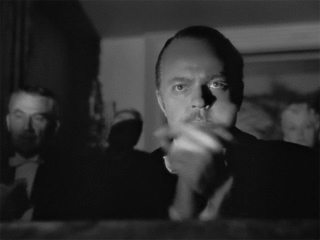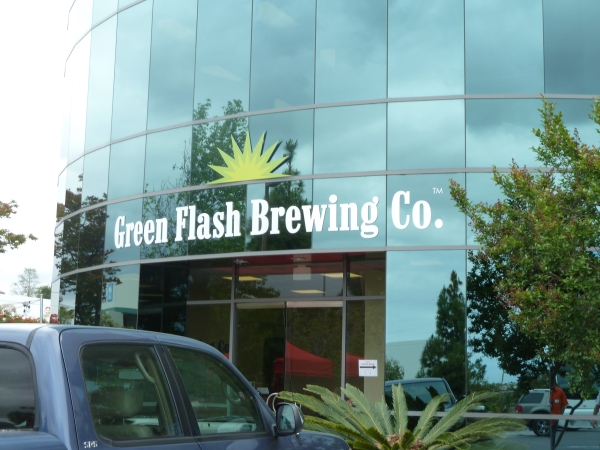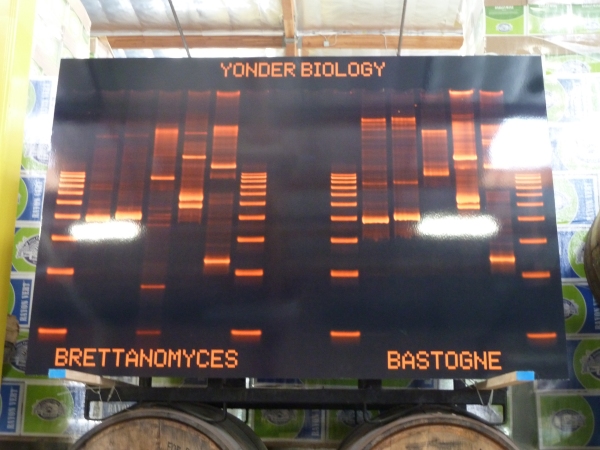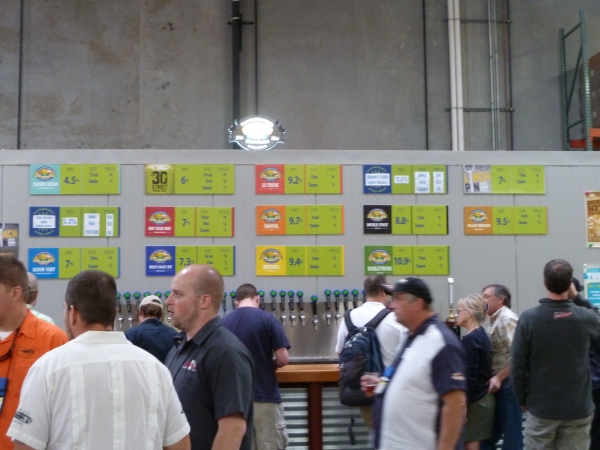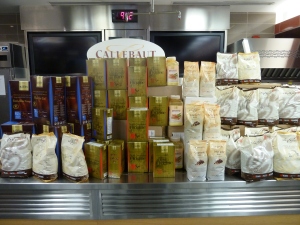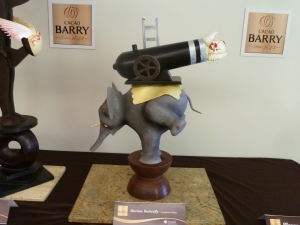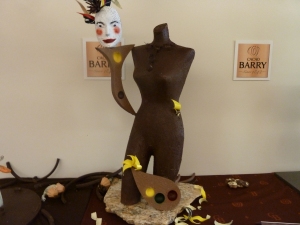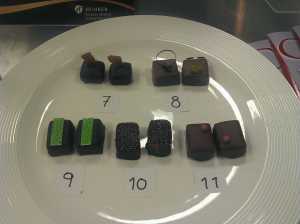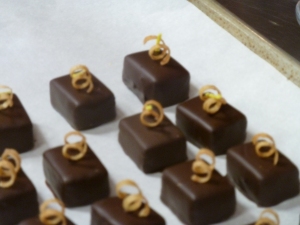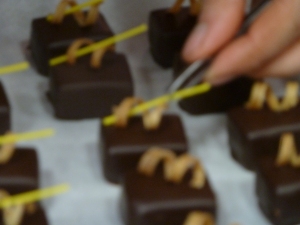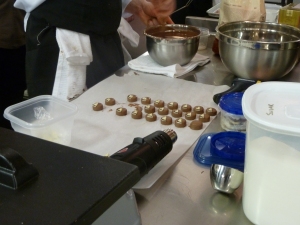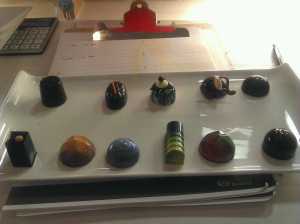How Not To Manage A Crisis: Labatt Blue
There are some particularly good examples in the history of crisis management.
Take Tylenol, who in 1982 suffered a major setback in Chicago. Some bottles of Extra Strength Tylenol had been tampered with and contained potassium cyanide. Because the bottles came from different factories, it was pretty clear that it wasn’t the result of a disgruntled employee. It is likely that because all of the capsules had been from around Chicago, there was some maniac going around tampering with the Tylenol on the shelves at different stores. Seven people died from ingesting the capsules. It’s referred to as the Chicago Tylenol Murders.
The answer was to recall all of the Tylenol on the market. Whether or not the company was at fault, there was something wrong with the product and since there was no easy way to ensure that the product wasn’t tampered with in an isolated region, they just pulled it all.
It was a sensible solution. In fact, it was the only sensible solution. They were open and transparent about why it was being recalled. Sure, it was a $100 million dollar loss of product, but compared to the lasting damage to the brand that might have happened, that was a reasonable loss to take. They brought in the Chicago Police, the FBI and the FDA in order to help in the search for the person responsible for the tampering.
There is still a $100,000 reward available for the capture and conviction of the Tylenol Killer, which you can probably try to claim if you’re feeling like getting your Mickey Spillane on.
Let’s look at this rationally
1) There was a problem with their product.
2) Which led to a problem with their brand.
3) Which they took positive action to resolve.
Eventually, partly because the solution was so sensible, they received a lot of sympathetic media coverage and the brand rebounded within a year to its previous market share.
I mention all of this because this was a CRISIS in all caps.
Do you know what’s not a CRISIS?
That’s right: Having a newspaper print a story about a deranged serial killer accompanied by a picture of the serial killer enjoying your product.
If you’re not already aware of the situation, the Montreal Gazette printed a story about Luka Magnotta with a picture of the guy enjoying a bottle of Labatt Blue. If I had to guess, I would guess that the picture came from facebook.
What seems to have happened is that someone at the top of Labatt saw the story and panicked, calling on the lawyers to send a cease and desist letter to attempt to get the picture removed. The press, the legitimate press, I mean (not guys like me who contribute from the periphery), don’t really like being told what to do. Other newspapers, like the Toronto Star, have people like Josh Rubin who write about beer and are certainly going to report on a story like this. Not only did the Gazette not remove the picture from their online news, it spread to other papers. And then twitter. And Facebook.
It’s really best not to try and bully the media.
Let’s objectively assess the situation:
Labatt Blue is the same product today that it was on Monday. While beer nerds will probably tell you that Blue is fundamentally flawed, nothing has changed. The fault doesn’t lie with Labatt and there is therefore no reason for them to have reacted in the way they did. If anything, the problem with the photo is that Blue is so universal. It’s something that average people drink on a daily basis. It’s pervasive in Canada. If anything, the reason that the picture is affecting is because of this omnipresence. This is an abnormal person doing a normal thing. I can guarantee you that if you commit some series of bizarre and horrifying crimes, we will be able to find pictures of you on facebook that would be totally mundane in any other context.
This wasn’t a CRISIS. This fell very much in the category of “Shit Happens.”
It’s unfortunate that the picture exists, but once it was out there, it was out there. What Labatt managed to do was turn an unfortunate thing that people would have shrugged off into a calamity.
There are a couple of ways that this could have been handled better:
1) Do nothing. Absolutely nothing. The nice thing about the 24 hour news cycle is that the constant stream of new coverage pushes things down below the fold. Possibly Labatt might have taken some gentle ribbing for a couple of days, but it would have disappeared down the memory hole without international attention and satire. Just because you can take action doesn’t mean it’s a good idea. Sometimes you just have to weather the storm.
2) If the first idea doesn’t seem like a good idea, and trust me, it would have been the best option, it would have potentially been a good idea to play off the brand’s omnipresence. Something like “We make a good product that is very popular and we don’t have any control over who consumes it. While we don’t like that this association now exists, there are any number of completely normal, law abiding citizens who also enjoy Labatt Blue.” They could then have followed this up with examples of those citizens. Possibly a celebrity spokesperson. This would also have had the effect of dragging the coverage out, but it would have been possible to control the situation to some extent.
The thing that’s really important to take away from this, if you find yourself in a situation where your product is somehow associated by a certified sex maniac psycho killer, is that there’s very little you can do about it. There will be some backlash. All you can do is limit the amount of media coverage that exists online. With the internet existing as it does, every story will find some kind of online reaction. If people can make jokes, they will. Twitter more or less exists to allow people to make calculatedly witty comments. More stories mean more jokes.
No one would really have carried on the association with Labatt Blue for very long. To be honest, the news story is of the variety that creates a certain amount of grim, morbid fascination. People would have forgotten about Labatt Blue with the next grisly detail.
Labatt exposed their belly and made for an easy bunch of news stories and fed into the machine. The twitter hashtag #newlabattcampaign trended massively in Canada. Whoever made the call to try and force the Gazette to do something should be seriously evaluating their ability to understand the way media and social media interact. The lawyers should probably have counselled against the action. Someone, somewhere, should have been able to stop the dumb thing from happening.
Pliny The Elder and Citizen Kane
One of the best things about traveling to San Diego last month was that I got the chance to try Pliny The Elder from Russian River on tap.
I can tell you that I didn’t get it.
I had had it in bottles before; a couple of times in fact. Mike Lackey, who you’ll recall is something of a maverick brewer at Great Lakes, was good enough to pull a bottle out of his fridge during a beer tasting one night. It was early enough in the evening, before it had devolved into a beer drinking that everyone still had some form of palate left. I saw a number of brewers that I respected trying the thing and going oooh and ahhh and I just didn’t get it. It’s a very good Double IPA. It may well be one of the best in the world, but I don’t know that it did anything for me. We had bottles of other things that were just as good if not better.
On the ratebeer list it is valued as being one of the best beers in the world. I don’t know how much stock one ought to put in lists like that, but they do show valuable information in terms of trends over time. At one point it may well have been the champion of the world.
In terms of being the best beer in the world, I would have put several beers of different styles that we tried that night ahead of it. Hill Farmstead had a lovely porter for one. I think Ballast Point Sculpin might have made an appearance.
The thing is this: With the context that I have from two years of writing about beer, I didn’t know exactly what was going on or why people were going oooh and ahhh.
I tried it on tap to make sure that I wasn’t missing something. I tried it on tap at Tiger! Tiger! In San Diego. Now, it was during the Craft Beer Conference, so you can bet that Russian River had sent in the freshest stuff possible, knowing full well that people were going to be ordering their beer during the conference. It was fresh. Tiger! Tiger! Is a really good bar, so you know that their lines were probably up to scratch. It was clean.
I still didn’t get it.
At one point my friend Russ Burdick from Biergotter nearly cuffed the side of my head when I told him he should try the Lagunitas Barrel Aged Sumpin’ Wild instead. I got out of that one by buying a snifter for him. Great beer, the Lagunitas Sumpin’ Wild.
I felt nonplussed. I went out the next night in search of Pliny The Elder and tried it again. I’m afraid to say that nothing lifted the fog. I didn’t get the beer. It’s a great beer, but it’s not this great legendary thing.
I don’t think that I was just being contrary. I certainly wasn’t being contrary intentionally. I actually buy into the hype for the Westvleteren 12. In some ways I’m a credulous moron.
Let me change the subject briefly and ask you a question about Cinema.
Have you ever seen Citizen Kane?
It’s quite possibly the best movie ever made. It was made in 1941 and Orson Welles was a first time director. He had final cut approval over the project so it was made exactly the way that he wanted it made. He cast the people he wanted to cast. He got the shots and the editing he wanted. It was a hell of a longshot in a lot of ways. It was codenamed RKO 281 so that people wouldn’t know anything about it. It was based on the life of William Randolph Hearst; an intensely private gentleman who would probably have put pressure on the studio to shelve the project if it had been known that it was being made.
It’s an incredible film even today. The techniques and directorial choices are 70 years old, but the story clips along at a pretty decent pace. The storytelling technique from different points of view of friends and lovers of the main character predates Kurosawa’s technique in Rashomon by a fair bit. There’s even a rollicking musical number. Plus, to be entirely honest, if Welles eventually devolved into a behemoth (more ham than auteur), he’s immensely likeable in Citizen Kane.
The truth is that most of you probably will not have seen the movie.
That doesn’t matter. The influence of damn near every scene in the movie is culturally omnipresent. If you’ve seen the first six seasons of The Simpsons, you have more or less seen Citizen Kane. Monty Burns is basically Charlie Kane. His bear, Bobo is Rosebud. His hound-releasing estate is Xanadu. The show references it with an almost maniacal fervency. Charles Foster Kane. C Montgomery Burns. Smithers even organizes a song and dance tribute to Mr. Burns that’s basically identical to the original.
It’s not even that The Simpsons did it. Everyone did it. The White Stripes did it.
You know the movie even if you’ve never seen it. If you go and watch it, you’ll be overwhelmed by the amount that you know that you didn’t realize you knew. Maybe you’ll be enthralled. More likely, you’ll be bored because you’ve seen it before.
This is the problem with Classics. Even if you’re unaware of them, they influence just about everything that comes after them.
So, to get back to my original point:
I’m standing in a kitchen with brewers who are tasting Russian River’s Pliny The Elder alongside me. I was nonplussed, while they were awed.
What I know now is that it was originally brewed in 2000 and evolved from a 1994 recipe called Blind Pig. It was brewed by Vinnie Cilurzo, who ain’t exactly without reputation. I wouldn’t want to hazard a guess at when the first Double IPA was brewed in Canada, but I’m guessing it wasn’t 1994. I got into the beer writing game long after trying my first Double IPA, which I think was probably Moylan’s. For me, when I started, these were commonplace. You’d come across one every once in a while.
It’s not so much that it’s a legendary beer as that it is a massively influential beer. The fact that it exists means that it must be observed. It’s a cultural touchstone in the same way that Citizen Kane is.
If you experience it, you may not like it. You wouldn’t be the first not to like it. It’s influential because it existed at the right moment in time. Part of its cachet may be that it came to represent the innovations of a certain place and time.
Is it a great beer?
I will tell you this for nothing: When I had it at Tiger! Tiger! I also had a pork belly banh mi sandwich. If I had to choose between having Pliny The Elder again or having the sandwich again, it would be the sandwich.
What follows is my rating for the sandwich:
I like Stephen King.
I do.
I keep reading his books even though they frequently take on weird turns. He has his strengths. His dialogue seems a little hokey until you realize that he tries to mirror actual human dialogue and most of what we say on a daily basis is piffle. I greeted someone the other day with “What up, Sasquatch.” Stephen King’s dialogue is not outside of the realm of possibility.
His characterization is usually better with minor characters. I don’t know what it is that falls apart in his main characters. I think that possibly the level of doubt and uncertainty that exist in all of our decisions on a day to day basis end up making us confused, but in a lot of cases, I think he tends to stretch chapters with that. There are inevitably scenes that stretch out character decisions in such a way as to render characters unlikeable. I do not know if he is doing this on purpose, but it may be forgiven in some cases.
Recently, he’s been getting better. I think that when he was hit by a car, it was preoccupying. It would be. Try to imagine being hit by a car. Maybe your femur gets shattered by a bumper. Maybe you hit your head so hard on the pavement that you lose everything for a while. It would be a terrible thing.
I almost gave up on him when he inserted himself into the Dark Tower series. I don’t find the ending of the series particularly glaring. I figure if a man writes 7000 pages, he gets to do what he wants with the ending. Good for him. The problem was that it seemed like he was going to go permanently metafictional.
Cell was not a great outing. Duma Key was better. Under The Dome practically measured up to The Stand. I think he has problems getting outside his own frame of reference. Subculture seems to be foreign to him. I think he also has issues assuming science fiction paradigms created by others. Also, the Simpsons did it.
11/22/63 is amiable enough. I read it recently and continued turning the pages. He has that knack. He can make you flip pages.
I learned something from Mystery Science Theatre 3000 when I was watching the episode where they riff on Overdrawn At The Memory Bank. It’s a bad movie starring Raul Julia. In the movie, they show the opening sequence from Casablanca on a monitor in an immediate and obvious fashion. The comment one of the robots make is, I think “Never show a better movie in your movie.”
Throughout 11/22/63, they make reference to the Butterfly Effect.
Do you know why the Butterfly Effect is called the Butterfly Effect?
I only know this because I was a Ray Bradbury fan growing up. I have the issue of Weird Science Fantasy from EC Comics in a polybag somewhere that has the first printing of that story. My favourite Ray Bradbury story is probably The Scythe followed by The Veldt. Somewhere, not too far down the list is A Sound of Thunder.
A Sound of Thunder deals with a Time Safari Company. They offer you the chance to go back in time and hunt a T-Rex. It is heavily implied that the T-Rex is probably on its last legs when you start shooting. If it dies where it’s supposed to, nothing bad will happen.
Oh hell, I’m not going to explain it. Read the thing.
See? The dumb bastard stepped on a butterfly and the difference was enough to change the future in an unpredictable way. I particularly like Bradbury’s treatment of it.
Embedded in the mud, glistening green and gold and black, was a butterfly, very beautiful and very dead.
“Not a little thing like that! Not a butterfly!” cried Eckels.
It fell to the floor, an exquisite thing, a small thing that could upset balances and knock down a line of small dominoes and then big dominoes and then gigantic dominoes, all down the years across Time. Eckels’ mind whirled. It couldn’t change things. Killing one butterfly couldn’t be that important! Could it?
So, look. The problem with 11/22/63 is one of scale. If, as you know if you’ve read time travel fiction, a small change can make a big one, then 11/22/63 is guaranteed to be a loser. The protagonist emerges in 1958 and has to live in the past for five years in order to attempt to stop the Kennedy assassination. That the protagonist is an English teacher is just embarrassing. I have to assume that any English teacher would have read A Sound of Thunder. It is one of the most heavily reprinted science fiction stories of all time. It was the most widely reprinted science fiction story in the world from its publication in 1953 up until 1984.
Bradbury must be happy with that.
The problem with the novel is that King expects us to believe that an otherwise intelligent man who is an ENGLISH TEACHER not to have ever read or viewed any of the works that deal with time travel. Like…. I don’t know….
The Time Machine, A Sound of Thunder, anything by Jasper Fforde in the Tuesday Next series, The Time Traveler’s Wife, Terminators 1-3, Back To The Future, 12 Monkeys, The Hitchhikers Guide, A Connecticut Yankee in King Arthur’s Court, Any episode of Dr. Who, Slaughterhouse Five, Time and Again, Time after Time (which is sort of insufferable because of Malcolm McDowell), Timequake, Harry Potter, The FRIGGIN Langoliers (which King actually wrote and is a better thing than 11/22/63), Planet of the Apes, Time Bandits, Star Trek IV, Bill and Ted’s Excellent Adventure, Army of Darkness, Groundhog Day, Austin Powers, an actual movie CALLED The Butterfly Effect, Futurama, Frequently Asked Questions About Time Travel (which is excellent), Hot Tub Time Machine and Midnight in Paris.
Consider that the protagonist is meant to be 35 and living in 2011. Much of this stuff would have been obvious pop culture fodder for a character’s background.
Let’s give him a pass. Let’s say that Jake Epping, the hero, is a nice fellow but that he doesn’t get out much. Let’s give him that and say he doesn’t know Michael J. Fox from Christoper Lloyd.
King actually lampshades A Sound Of Thunder in the closing chapters of the book. Not through the protagonist, but through his girlfriend. She comes out and says that she knows what the Butterfly Effect is because of the Bradbury story.
Clearly, this is King messing with us. He must be, right? No one would be that glaringly obtuse.
The worst part is this: He attempts a framework to explain the alternate timelines. He gives us the card men. It is never explained what they actually do. We know they are human, but that means nothing. Where are they from? This could have been explained in a damn chapter. Six pages. Who are the time police? What do they do? He never explains this. Oh, sure, he shows us the consequences of the changed past, but do they all stem from the circumstances surrounding the assassination of JFK? We never find out what changed what. Anything could change anything. Any character spending thousands of dollars in the past could change a huge amount without realizing it. The assumption that the big change is the only one that matters is tantamount to a slap in the brain.
It’s unforgivable. If you are unwilling to deal with the omission of any sort of pop culture knowledge from the protagonist and also unwilling to create a defacto system of rules for time travel within your own work, then you have nothing in terms of cogent information upon which to decide whether anything that transpires is valid.
I’ll give him one thing: His portrayal of Lee Harvey Oswald is probably fairly accurate. He did his research at length and it shows.
I can’t really recommend 11/22/63. Its flaws are too glaring. It could have been paired down by two hundred pages. I’m a nerd, but not really a time travel nerd and even I thought this was weak. It’s so weak that it makes me angry hours after finishing it. Good characterization of the villain of the piece and a classy ending earn it a 2/5. Maybe you should read it if you like Stephen King.
Actually, if you like Stephen King, go read Blockade Billy instead. It’s a better indication of what he’s still capable of. I have no doubt that at some point in the near future he’s going to hit on a winner. This wasn’t it.
Bellwoods Brewery
People have already written about Bellwoods Brewery. I sort of suspected that would happen out of the gate. It seems like everyone in beer in Toronto has been there. I knew it was going to be a big deal when my next door neighbour, Dave, mentioned in passing that he had heard really good things about it. Dave isn’t a beer guy. When the hype gets to the point that people I barely know are suggesting story ideas for the paper, that’s a pretty good sign that the thing is going to take off.
I wanted to wait a month before going in. I figured that they’d have everything just so before opening, and that turned out to be correct. When their regular operations started in April, they had already been brewing for two months. That’s enough time to make sure that all of the beer is in the right shape. I wanted to see what it looked like on a regular day.
I managed to wait almost exactly a month.
The main impression that I’ve come away with, having had a day or so to think about it, is how modular everything is. I suppose that the closest approximation I can come up with is LEGO. Everything is designed to fit together in a way that belies the simplicity of the concept. You can do just about anything with a modular design, and it feels to me like they may have approached the problem this way.
I’ll give you an example. The brewery itself is actually smaller than my apartment. I’m not aware of many operating breweries on a smaller footprint in Toronto. There are some that are smaller in terms of the volume that they produce, but in terms of sheer ability to condense a brewery into the space, Bellwoods is impressive.
They have somehow managed to fit a 7BBL brewing system, 3 14BBL fermenters, one 7 BBL fermenter and two 7 BBL bright tanks into that space. The bright tanks are actually stacked on top of each other. This is not a solution that a lot of people would have gone with, but it needed to work in the space. Not only do they have this equipment, but a pilot system. The keg washer is mobile. The bottle filler will eventually be mobile. A barrel aging area has been set up on racks. This is clearly a case of brewers having had to find a solution to work with the building, but somehow it doesn’t feel cramped.
I stepped off the bus directly in front of the brewery and one of the brewers was outside cutting molding for the blackboards with a mitre saw. To me, this explains a lot. Mike Clark and Luke Pestl are clearly DIY types. The fact that I unwittingly showed up early allowed me to see a little bit of this. If you own a brewery, you’re going to end up fixing things. The relative ease with which Luke was gliding around fixing things is not something I’ve come across frequently. Molding. Ladder. Nailgun. Done.
In point of fact, I was sitting at the bar, watching him install a glass rinsing station when they started serving drinks. I think it took something like ten minutes. This happened between brewing and setting up for the day.
The design is spare, favouring form over function. There is restraint and taste at work here. Brewpubs accumulate bric-a-brac over the course of their existence, but Bellwoods has kept it basic. Rough hewn wooden shelves hold the simply branded glassware. The walls are white, featuring photographs and sketches. The original print that was used for logo design hangs over the bar.
The approach to the beer list is modular as well. I tried samples of all of the beers being offered, and they’re all very well made. There’s no timidity here. I think that the Berliner Weisse was my least favorite of the available beers, but this is because I was expecting a slightly more tart yeast character. For the iron brewers competition last year, Luke had produced a Berliner Weisse with yeast he had caught himself. If this minute quibble is the best I can muster regarding their lineup, then they must be doing something right.
The tap list hangs together well. I think Mike and Luke are aware that not all of the beers on offer can be directed at beer nerds, but they’re still finding a balance on the tap list. While the Witch Shark Double IPA has been much lauded, there are relatively few beers on the list lighter in alcohol than 6.0%. The Common Pale Ale, which survived the launch of the brewery, looks to be on the chopping block as they experiment with finding sessionable beers that will fit in with the rest of the lineup. Why? Because it doesn’t thrill them.
There’s no such thing as a flagship brand at Bellwoods. Everything is changeable. Every beer can be replaced.
The same sense of modularity carries through to the food menu. There is enough variety to make sure that everyone is happy, but it’s a seasonal list. The list will change as the chef is inspired or as the seasons dictate. Personally, I was happy to see a cheese list that included not only local Canadian cheeses, but a Brie de Meaux, which is something of an old school favorite. There is a sense that things can be swapped out. Even the more esoteric offerings, like the skewer of Duck Hearts in Charred Jalapeno Oil are a great deal more accessible than I would have thought.
While I was there, I talked with Luke and Mike about their patio. “So when are you going to buy chairs?” was my question. It doesn’t work like that at Bellwoods. They’re going to build their own patio furniture. And a pergola. And railings. And they’re going to open a bottle shop. And they’re going to knock through to next door and add more fermenters. And they’re going to fill growlers. And they’re going to get more barrels going. And they’re going to take over the world.
I get the feeling that this is as much a brewery as an ongoing renovation. It’s DIY heaven. It will grow and expand and the offerings will probably become more elaborate. Mike and Luke don’t seem to me to be the kind of guys who will settle for having a set taplist or a set menu. These are guys who enjoy a project. I don’t know what Bellwoods will look like a year from now, but I can guarantee you that the shadow they cast will be a great deal larger than the 350 square feet their brewery takes up.
Green Flash OR At Least I Learned Something
Sometimes, you’ll have one of those moments where the things that you have learned suddenly snap into place and you’re left talking competently about a subject that you thought you didn’t care about. The second semester at Niagara College was based largely around the scientific aspects of brewing. Of course there’s all manner of information available about the ingredients that go into making beer, but the equipment being used in order to facilitate all of that action is important too.
The difficulty is that I wasn’t there for the first month or so of the second semester and never really caught up. The thing you have to understand about Niagara College is that if you’re going to go there to learn about beer, you have to move there. Well, St. Catharines, anyway. There were a couple of students in first year who were commuting from Toronto, but they fared rather better than I did because they were on the same schedule and had the ability to carpool. A sense of camaraderie is important in a situation like this.
In my case, I would get up at about 5:30, drink several cups of coffee, get to the Bay/Dundas bus terminal by 7:00 (leaving the house at 6:30), get on the bus, get to St. Catharines about 8:25, get on the bus to Niagara College and then get to school no earlier than 8:43. I would go to whatever classes there were and then get back on the bus and commute the two and a half hours to my apartment. If you consider the cost of the return trip including the TTC fare… well, don’t.
People ask why I didn’t just drive: I don’t drive. I know how in a vague “I’ve played a lot of Need For Speed Underground” kind of way, although I suspect that I would probably confuse the windshield wiper lever for the nitro booster jets in a real car. What do you mean they don’t have nitro booster jets in real cars? Friend, I think you’re mistaken. Next, you’ll be telling me that carbon fiber doesn’t make it go faster.
For about five months I was doing really well. I made honor roll the first semester, which was good. Then I got offered a book to write and I had to do that and the technical stuff fell aside. Deadlines would crop up, or I’d have to write a column (for which the deadline is usually Thursday. So much for that afternoon class.) Eventually, with the number of tasks to perform, commuting 4-5 hours a day was impossible.
People ask why I didn’t just work on the bus. I did. Sometimes. Initially. Eventually you just get run down and tired. I slept for three days after first semester. You get sick because you’re on a bus with people sneezing and coughing. Also, brewing technology is a pretty hands on kind of thing. The driver frowns on dismantling a pump on the bus.
Essentially what happened was that I started writing about beer in order to get into brewing school and by the time I was in brewing school it was more or less the main source of income and therefore the thing to prioritize. I more or less inadvertently succeeded my way out of the original plan.
The thing is this: You can write about anything. You can’t bloody well brew about anything. Try brewing a treatise on Keynesian economics. Probably, people will not get past the first paragraph.
I was pleased to learn, while I was in San Diego, that I have picked up enough technical brewing information to tell you the following:
Green Flash is the most wonderful brewery I have ever seen. A lot of the time when we talked about brewery tech in Gord Slater’s class at Niagara, we were tailoring the information to making things fit together. Most breweries don’t have the luxury of getting everything brand new. A lot of the equipment is bought second hand or jury rigged together or improvised.

In the time before forklifts, the tricyclist’s union was a very powerful political lobby in California. For more on this see Steinbeck’s Of Trikes and Men.
Green Flash is what happens when you have the opportunity to start over from scratch at a new location when you’re in the middle of your life as a brewery. The fermenters are 250BBL behemoths and their layout is such that they maximize the space in the brewery. Green Flash has nearly doubled in production in the last year, up to 45000BBL. Chuck Silva has managed somehow to design a walkway that sits between the tops of the fermenters making it easier to dry hop the fermenting beers. There’s talk of doubling production in the next couple of years.
The fermenters are next to the CIP system. I would not have thought that a CIP system would be remotely interesting to me, but this sucker is flat out sexy. It has dual 10HP pumps. It’s got a sleek touchscreen interface. I was floored by it. I guess if you’re going to significantly dry hop your beers, you need that kind of power in order to wash away residue.

I feel like I should be making Tim Allen style noises and/or talking like Jeremy Clarkson about power.
The brewhouse is similarly impressive. It has two 50 BBL kettles that run simultaneously and the biggest hopback I’ve ever seen. I would guess it’s a 2 BBL hopback. For those of you who don’t know what that is, it allows you to run wort from the kettle through a vessel filled with hops to whatever system you’re using to cool beer. It lets you maximize the amount of aroma retention. I have seen industrial boilers smaller than this hopback. Great googily moogily.
I was unable to ascertain the information from looking at it, but I think they’re working with a 72 head filler. I cannot really imagine this. I have worked with a single head filler and I’ve packaged off a six head filler. For craft beer, this is a production.
There’s the barrel aging program, just off the tasting room. While we were there, there was a display that showed the DNA structures of the various yeasts being used in the barrel aging process. If I understand correctly, there were also captures of brewmaster Chuck Silva’s DNA. This is a good reminder that the processes going on here are biological and not completely artistic. How much DNA do we share with yeast? Probably not as much as we share with dolphins.
The tasting room is 4000 sq ft. It is five times as large as my apartment. Actually, if the tasting room had Wi-fi and a coffee maker, I could happily live there. They had a large number of beers on tap and even more for sale. They had a food truck outside. Merchandising takes up an entire wall. I wasn’t kidding in the paper when I said I liked it so much that I bought the t-shirt.
Now, Green Flash has only been around since 2002. I know that this kind of success doesn’t come overnight, and I can’t tell you how many untold hours of financial planning and design and experimentation went in to giving them the facility they have now, but this is a dream brewery. It’s a marvel. More than that, it finally allowed me to understand how all of this technology fits together and the implications of that information.
I said as much to Chuck Silva. He had the good grace not to beam too proudly.
Session 63: The Beer Moment
(ed. note: Pete Brown, that lovable rapscallion and author of such books as Hops and Glory and the upcoming Shakespeare’s Local is hosting this month’s edition of Session. Apparently Stan Hieronymous started this five years ago. Bloggers are given a subject to write on once a month and can start an online business through this site. I figure I may as well throw my hat in the ring, being as how I should be packing for San Diego and my natural inclination is to procrastinate. Probably I will find myself tomorrow night realizing that I don’t know where my passport is. So it goes.)
I feel as though I’ve told this story before. Do I repeat myself? Very well, I repeat myself. I am vast and contain Xeroxes.
For me the beer moment is usually not something that comes about in a group of people. Most of the people that I hang out with while drinking beer with a Kansas City outdoor led display screen, are beer people. While I know them to talk to them, I don’t really know a lot about them. I couldn’t tell you about the families of brewers that I know. The conversation is typically not more profound than the provenance of the glass of beer in front of us. What variety of hops. This yeast. That barrel. Fermentation time. An unspoken understanding of the fact that time and effort has gone into this thing. It can be informative or interesting or tiresome. It depends on the day. Most of the camaraderie is based on the fact that we have previously been in the same place while drinking beer.
For me, the beer moment is also the answer to a question I get asked a great deal: “What is your favorite beer?”
The people who ask this are typically good enough to ask it with good humoured sheepishness. They know that I must get this question a lot.
The answer is Hook Norton Old Hooky.
I have heard people say that if you claim to have a favorite beer, you are probably not a beer lover. I think that’s nonsense. I can see the assertion might be valid if you have chosen a favorite beer based on advertising.
I always tell people that it’s my favorite beer because of the situation in which I had it.
I had been in England for about a week, and had split my time between walking along the South Bank and visiting various museums. You can work up a pretty decent thirst navigating the Tate Modern and the Victoria and Albert and Apsley House. Typically, I would go out and walk around London and absorb the culture and then go and drink a couple of pints of beer. The museums and galleries seem attached to nearby pubs in my memory; The Tate Modern and the Royal Oak. The National Gallery and The Chandos.
I had Old Hooky for the first time in a pub in Dulwich (well, Peckham) called The Gowlett. It has won some CAMRA awards. I knew a little bit about cask beer. This was before I was writing about beer, and long before I had considered brewing anything. I liked it, but it had been a long day and I wasn’t really focusing on it.
The second week I was in England, I was in Cambridge. I was staying at St. Catharine’s College because a friend of mine was taking a degree there, and was good enough to explain my presence to the porter.
Nowadays, I know that the pub to go to is Cambridge Blue. In those days, though, I settled on the nearest pub: The Eagle.
I walked in and looked at the taps and thought, “Oh. This is a Greene King pub,” and I practically walked out, but they had Old Hooky on cask and I thought I’d have that. I sat outside in the late February sun with my book: Evelyn Waugh’s Sword of Honour trilogy.
It was lovely. I mean, I assume it was lovely. It was in good condition. That much I remember. Five years ago, I wasn’t taking notes. I decided that since I really had nothing else to do that afternoon that I might as well settle in. I walked inside to get another pint and saw the plaque that declared this to be the place where Watson and Crick announced the discovery of DNA.
I turned the wrong way going through the pub and walked into the RAF bar. The ceiling is covered with graffiti from World War II airmen. They must have climbed on tables and burnt their initials into the cork ceiling. Squadron numbers as well.
The pub, as it turns out, has been there since 1667. There’s a lot to be said for historical verisimilitude.
Eventually I located the bar and got a pint of Old Hooky and went back to my table in the little courtyard and continued reading. It was about halfway through that pint that everything clicked. People had been drinking ale in this pub for 340 years. I was actually reading about the kind of people that burned their initials into the ceiling thirty feet away. This pub had been a constant through centuries of Cambridge students, distinguished and not.
It was the first time I thought of beer as more than a beverage. It’s part of a long cultural tradition of community and hospitality.
As a beer writer, I have these little epiphanies from time to time. That was a perfect beer moment, though. Everything suddenly fell into place. It even gave me a better understanding of the English.
Consider this: you’ve just made the most important scientific discovery of the century. What’s your first move? Off down the pub for a pint.
In Which I Refrain From Making Any Puns About WVRST
You know how sometimes, you acquire a bottle of beer that’s going to be really, really good? The temptation is to chill it and serve it immediately, but that’s not always the best course of action. You will have read about the beer on some rating site and it’s got a 98. It’s a world class beverage. You’re probably not going to be able to get it again unless you go across the border and pay a ludicrous amount of money. You put it at the back of the fridge and shift it to the back of your mind. Maybe you read about other people drinking it, but you think “I’m saving that one for a special occasion.”
Delayed gratification tends to make things sweeter. At least it cuts down on the immediate buyer’s remorse.
It’s the same way with events and locations in Toronto. Sometimes you want to save them up so that you can just go in with the selfish intention of enjoying them. I know that a lot of times a blogger is a publicity tool, but I’ve become relatively comfortable with the idea that there are enough beer bloggers in Toronto that I don’t have to go to every event. Actually, with the way the market is taking off there is frequently more than one event on the same day. It’s becoming impossible to cover everything.
It’s for this reason that I feel no shame in admitting that I hadn’t been to WVRST until Tuesday.
I know. It’s a huge part of the Toronto beer scene, and everybody has been there. There are beer school events where people learn about beer and it seems to have become a hip spot with lineups frequently stretching down King Street even in winter. I can’t even realistically claim that I’ve been too busy to go. I was sort of saving it up because I knew it was going to be good.
I hadn’t ever really gotten a full picture of the thing. I was astonished by how spare the décor is. The tile wall proclaiming the name of the place is immediately recognizable by anyone who has taken the subway (as Chris Grimley pointed out to me). The walls are dark, except for the giant whiteboard. The lighting might as well have been stolen directly from an outdoor beer garden. There’s none of the brewery ephemera that you might find on a patio, but it still somehow maintains the semblance of being an outdoor space, possibly because of the dark ceilings.
I was invited to a tasting of Schneider products. I had tried all of them before, because they’ve done very well in the LCBO in recent years. They make some excellent beer, but for me the focus of the evening was trying to understand what it was about WVRST that makes people gravitate there.
The tap lineup is quite impressive. Local craft offerings interspersed with some Dieu Du Ciel and a lineup of German favorites. It’s a very balanced selection and from what I’ve heard, they actively pursue local breweries in an attempt to get their beers on tap. Also, the serving sizes are well considered and the prices are reasonable. I believe on Tuesday it was possible to get a stein of Sawdust City’s Lone Pine IPA for eleven bucks, which is a steal.
We were drinking Schneider beers; in the presence of Susanne Hecht, no less. She’s a joy to listen to because she’s so knowledgeable about beer. Also, she’s a pretty formidable presence in the beer world, so Chris Grimley and I were on our best behaviour, choosing to forego the steins.
I have another admission: I have frequently been disappointed by beer and sausage as a combo. I realize that it is a classic pairing and that it is a no brainer and that everyone in the entire world from tailgaters to the Pope likes a beer and a sausage. Usually it’s taken for granted and there’s not a lot of thought that goes into it.
Not so at WVRST.
The sausages contain exactly the right amount of fat. Throughout the pairings the sausages were never greasy. The flavours that were intended came across precisely. The bun is of exactly the right texture and dimension to house the sausage. It contains any juice that runs from the sausage without becoming spongy. Somebody has clearly put a lot of thought into this.
We had the Pheasant Sausage with Schneider’s Original Weisse and the pairing worked incredibly well. The apple and shallots in the sausage complemented the underlying sweetness of the wheat beer nicely. We had the Venison Sausage with the Aventinus and the red wine and Dijon in the sausage worked with the spiciness of the wheat dopplebock. Finally we had the Lamb Merguez Currywurst with the Schneider Hopfenweisse, which managed to stand up to the heat of the harissa and curry. The duck fat fries came close to starting a fist fight.
The thing that I noticed, as we were going along, is that this is not a place that people stay and hang out at. People walk in. They walk to the counter and order food. They walk to the bar and order a beer. They sit down, they eat and then they walk out. This is not exactly a pub, and although you could hang around if you wanted to, it’s not really what it’s there for. The turnover is high and I would guess eighty to a hundred people came through in the two hours I was there.
This is clearly a lesson: too often we get caught up on making sure the beer list is great at the expense of other elements. WVRST looks like it ought to have been a no brainer. I kept thinking “why hasn’t someone done this before?” Those might be the best sausages I’ve ever had. The beer list would tend to be one of the best in the city. Either element could draw a crowd from all over. The prices are reasonable. It’s located fairly centrally. They’ve managed to strip the entire beer and food thing down to its barest elements without complicated menus and without pretense while maintaining quality.
Well, like I said: I knew it was going to be good. I just didn’t know how good.
A Brief Interlude From Beer Writing: The Three Stooges
(ed. note: Sometimes I get tired of writing about beer and allow myself to indulge in trying something else. I assure you, we’ll be back to beer at some point in the very near future.)
When I saw the commercial during the superbowl for a Three Stooges movie, I was skeptical. Of all the comedy styles that were generated on the vaudeville circuit, slapstick has probably aged the worst. The sort of snappy patter and absurdity that the Marx Brothers cultivated have always transferred relatively well from their act. Even the song and dance comedy of the Ritz Brothers still has a place in popular culture, usually as a third act of a sitcom. Slapstick has long since been relegated to cartoons, wrestling matches and America’s Funniest Home Videos.
I think that this is partially because it provokes a binary response in people. You either love or hate slapstick comedy. I’m sure there are people who hate it when pie fights appear in a movie. The pie fight doesn’t really accomplish much of anything. It’s a bit of comedy business, regardless of whether it’s Larry Fine in a Stooges short getting a pie in his face or Harvey Korman faking his way out of one in Blazing Saddles. I guess the ultimate possible payoff of a pie fight is that some stuffed shirt gets taken down a peg momentarily.
At its more extreme end, Slapstick is obviously unrealistic. If Bugs Bunny does a high dive off a tower into a glass of water, you can suspend your disbelief because it’s cartoon. If you see Moe Howard poke someone in the eye several times over the course of a sixteen minute short, it’s hard not to wince and wonder about detached retinas. The total lack of realism puts people off. No one is going to survive a sledgehammer blow to the head.
It’s more or less impossible to consider the Three Stooges as art. You can’t claim, like you might be able to with the Marx Brothers, that the characters are some kind of representation of Freud’s Id, Ego and Super-Ego. The Three Stooges are pure Id. They run amok in pursuit of their goals, intellectually unequipped to deal with the world around them. Their appeal is their indestructible nature and their persistence, whether they’re trying to win a brewery’s golf tournament or fix someone’s plumbing. The punchline is never more elaborate than someone experiencing some kind of pain or humiliation or embarrassment.
As punchlines go, it’s a classic. Man falls down, goes boom is a perennial schtick that transcends cultures. You may be the most compassionate person in the world, but a man stepping on a rake or getting a football in the groin is probably still going to provoke a visceral reaction.
Imagine how hard it must have been to be a Stooge.
Picture being in a performing troupe in the dying days of Vaudeville. They were on the Vaudeville circuit for nine years before they started making short films for Columbia. They were on a dying entertainment circuit during the first five years of the Great Depression, while film was really coming into its own as an inexpensive night out.
By the time they started making shorts, the lineup was Larry, Curly and Moe. They signed to make 8 pictures a year for Columbia, and they did this in 40 weeks a year. They got 600 bucks a week to do that. I can practically guarantee you that they were working injured. Props don’t always give way and for a lot of the stunts they went through, there were no crash mats. Even trained stuntmen suffer bruises and concussions and broken bones with protective equipment. Larry developed a callus on his face from years of being slapped. Curly had a number of strokes and people speculate whether they were caused by brain damage.
Moe was born in 1897. By the time they started making shorts in 1934, he was in his late 30’s. He continued making appearances in various Three Stooges lineups until 1970. At one point he was a 73 year old man making a living by slapping people and calling them lamebrains! This is what happens if you’re in a specialized career path.
By the time Curly Joe was a stooge, everyone had aged visibly and you got the sense that they were doing this because they had to; because they hadn’t saved any of their money. Those shorts are painful to watch because they feel like gratuitous if understandable cash-ins.
Actually, a lot of the shorts are painful to watch. Much of the writing was bad, and it’s not necessarily the fault of the writers. You try coming up with 196 plots where three people who are inexplicably bound together are hired to perform some function. The plots are really only there are as pretext for the schtick. There’s a reason they did shorts. The writing would never have stood up to a longer format. Try watching 1961’s The Three Stooges Meet Hercules if you want to be angry with yourself for having wasted an afternoon.
The things that are memorable are the mannerisms and the schtick: Shots to the gut paired with a timpani beat. Insults and hair pulls and eye gouges and running in circles on the floor. Nyuk, nyuk, nyuk. Woo, woo, woo, woo, woo.
The Farrelly Brothers used a light touch on the new film, and the number of new ideas it presents total none. They had over a hundred hours of source material to borrow from. They stole the best bits from the entire career of The Three Stooges. The casting is great. The writing and editing are better than anything the original stooges had to work with. Working with any kind of budget at all helped tremendously.
It’s about as respectful of the source material as it could possibly be. It even takes its visual cues from it. There’s a scene early in the movie where the stooges are being dragged along behind a truck. In a modern comedy, we would get the shot for two seconds and move on. In this movie, the shot remains static and the timing of the stooges being dragged along is closer to where it would have been in the 1930’s. There are moments during particularly violent bits where the stooges are clearly dummies, which is a nice visual homage. There are even stop motion frames in the same kind of situations where they would have existed in the original shorts.
It’s an homage, but I think it’s better than any of the original material. The essence of the characters is completely retained, but it’s helped by the fact that in this incarnation they’re young. It was no fun watching three fifty year old men knock each other around with a two by four for a paycheck. Here, that’s not an issue. The movie is an amalgamation of all the good things you remember about the Three Stooges, without any of the baggage.
It does one other important thing. It acts as a sort of nature preserve for slapstick comedy. I don’t know that slapstick will ever again be a major staple of movie comedy, but this attempt is a reminder that at one point it existed contemporaneously with other forms.
The Brewer’s Plate 2012: A Shameless Plug
While I have a moment here this afternoon prior to attending a launch for Alexander Keith’s original cider, I’d like to bring something to your attention. We have a relatively unique beer event coming up on the Toronto calendar, and it’s one that you’re definitely going to want to attend. The Brewer’s Plate is coming up on Wednesday the 18th of April, and it’s just a corker of an event. I attended last year, and it was one of the highlights of 2011 for me.
This year should be a particularly interesting edition of The Brewer’s Plate because the venue has been moved from the Wychwood Artscape Barns to Roy Thomson Hall. The venue is larger and has a few more amenities, and as such should result in a less crowded event that is more thoroughly enjoyable.
General admission is $125.00, but if you feel like blowing the bank on it, you can upgrade that ticket with an optional master class in beer tasting. The tasting is in September 2012 and costs $100.00 by itself, but you get $25.00 off if you buy now. Clearly, that’s the kind of thing that you’ll want to do if you have that kind of money lying around and love beer.
You may think that’s expensive, but a lot of the proceeds go to Green Thumbs Growing Kids. This is a program that teaches kids all about sustainable gardening. Initially, the name confused me and I was worried about pod people, but I have been assured that this is in fact about local seasonal food.
Jamie Kennedy has been named as Patron of the event this year. According to my post from last year, he had the best individual dish, but did not pair most successfully. There are about twenty brewers taking part. There are a number of talented chefs including Brad Long, Lora Kirk, and Mark Cutrara who squared off last year. There’s new blood as well. There are about six chefs that weren’t there last year.
This year I’m looking forward to watching two veritable titans of the beer industry square off as Stephen Beaumont attempts to get Alan McLeod to admit that he likes a beer pairing. I plan on observing them and amusing myself by providing a running commentary in a hushed, breathless imitation of David Attenborough.
Go! Buy a ticket! Do it! Do it now! You know you want to! Go to their website and hope they’re not already sold out! Woe betide you if they are! They’ll sell you the whole seat, but you’ll only need the edge!
